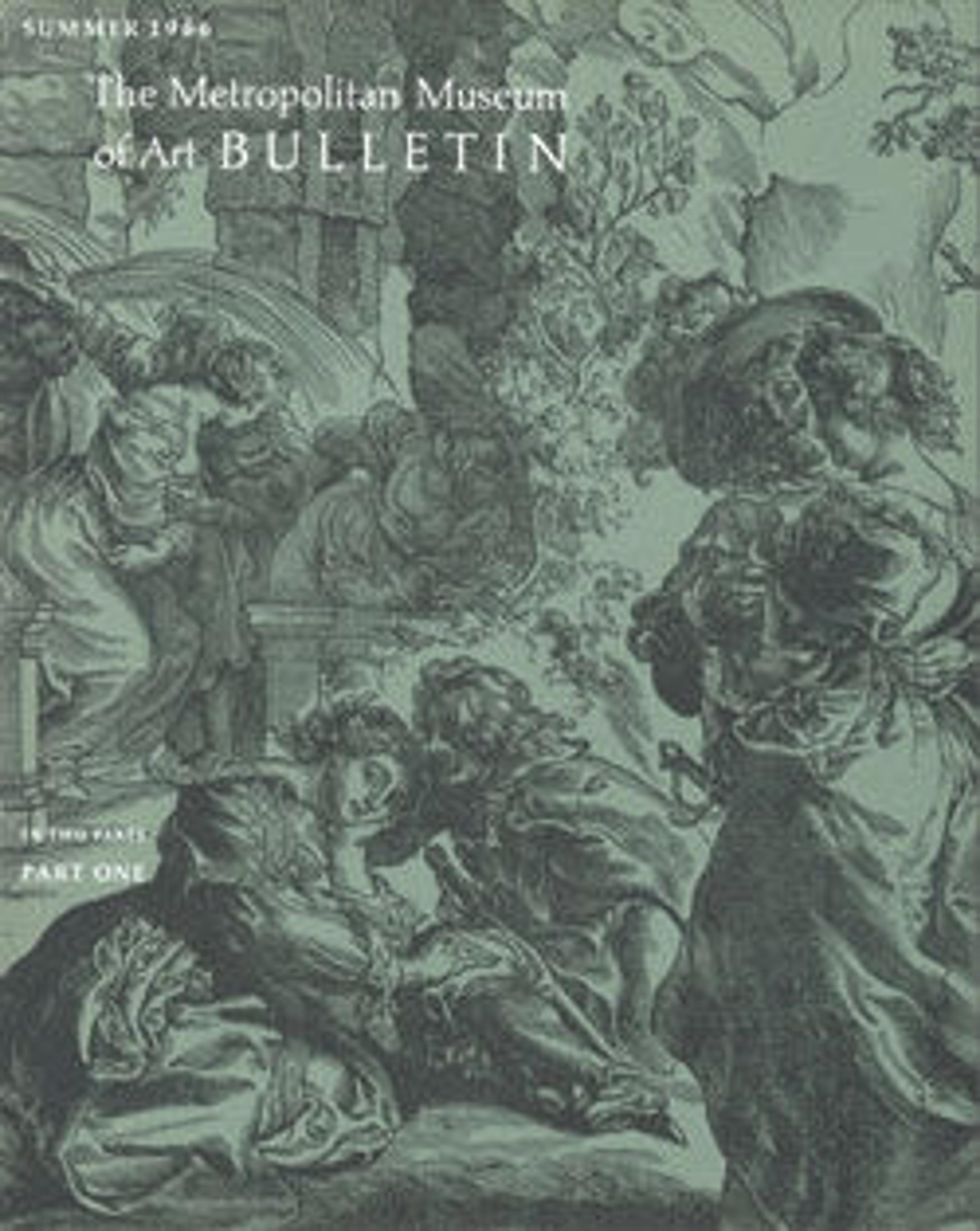The Garden of Love (right block)
Having realized the potential profits to be made from reproductive prints of his work, Rubens began to engage printmakers from 1619 onward. In the early 1630s, he turned to woodcuts in close collaboration with Christoffel Jegher. Indeed, Jegher's place in art history as the most important woodcutter of his time rests exclusively on the nine large single-page woodcuts that resulted from this collaboration.
The Garden of Love is a variation of a picture by Rubens from the 1630s (Museo del Prado, Madrid). Two drawings by Rubens (finished by Jegher; see 58.96.1,.2) served as models. The woodcuts reproduce these drawings in reverse. The drawings, and consequently the prints, transform the composition of the painting into a frieze, most notably by dividing it into two separate parts, pushing the figures to the foreground and cropping the architecture at the top. The inherent nature of the coarse woodcut medium and the effect that could be achieved with it were fully exploited, particularly in the rendering of the human form.
The Garden of Love is a variation of a picture by Rubens from the 1630s (Museo del Prado, Madrid). Two drawings by Rubens (finished by Jegher; see 58.96.1,.2) served as models. The woodcuts reproduce these drawings in reverse. The drawings, and consequently the prints, transform the composition of the painting into a frieze, most notably by dividing it into two separate parts, pushing the figures to the foreground and cropping the architecture at the top. The inherent nature of the coarse woodcut medium and the effect that could be achieved with it were fully exploited, particularly in the rendering of the human form.
Artwork Details
- Title:The Garden of Love (right block)
- Artist:Christoffel Jegher (Flemish, 1596–1652/53)
- Artist:After Peter Paul Rubens (Flemish, Siegen 1577–1640 Antwerp)
- Date:1630s
- Medium:Woodcut
- Dimensions:Sheet: 18 1/8 x 21 1/16 in. (46 x 53.5 cm)
Mount: 22 x 28 in. (55.9 x 71.1 cm) - Classification:Prints
- Credit Line:Harris Brisbane Dick Fund, 1930
- Object Number:30.53.17b
- Curatorial Department: Drawings and Prints
More Artwork
Research Resources
The Met provides unparalleled resources for research and welcomes an international community of students and scholars. The Met's Open Access API is where creators and researchers can connect to the The Met collection. Open Access data and public domain images are available for unrestricted commercial and noncommercial use without permission or fee.
To request images under copyright and other restrictions, please use this Image Request form.
Feedback
We continue to research and examine historical and cultural context for objects in The Met collection. If you have comments or questions about this object record, please contact us using the form below. The Museum looks forward to receiving your comments.
